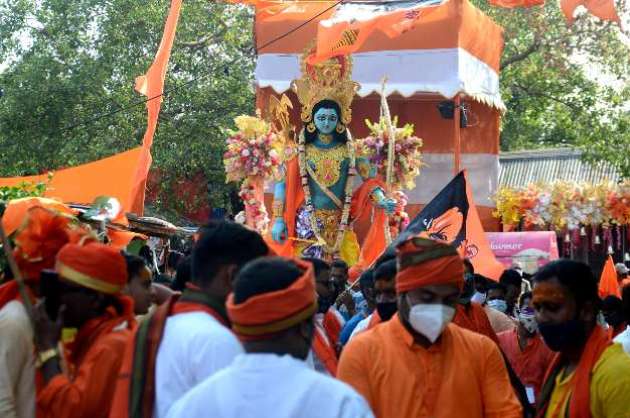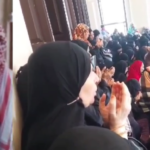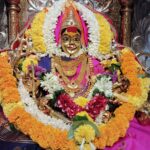By Anupama Nair
Mumbai, April 26
Today is Rama Navami, the birth of Marayda Purushottam Sri Rama. It is the victory of goodness on evil and establishment of Dharma to beat Adharma. Rama Navami celebrates the birth of the seventh incarnation of Bhagwan Vishnu, Sri Rama. He was born on the ninth day of Chaitra month in the afternoon. This year is special as the Rama Temple is being built in Ayodhya nearly after five centuries.
It is marked by the faithful’s with puja (devotional worship) such as bhajan and kirtan, by fasting for 9 days and reading passages about Rama’s life. Celebrations are seen in some cities mentioned in the Ramayana about Rama's life. These cities include Ayodhya the birth city of Ram Lalla (Uttar Pradesh), Rameswaram (Tamil Nadu), Bhadrachalam (Telangana) and Sitamarhi (Bihar). Some locations organize Rath-yatras (chariot processions), while some celebrate it as the wedding anniversary festival (Kalyanotsavam) of Rama and Janaki. Rama Navami festival celebration starts with the Jal (water) offering in the early morning to the Sun God to get blessings from him. People also believe that descendants of Sun God were ancestors of Bhagwan Rama
Though, the festival is named after Rama, the festival typically includes reverence for Sita, Lakshman and Hanuman given their importance in Rama's story. Some Vaishnava Hindus observe the festival in Hindu Temples, while some observe it within their homes. Some communities observe all nine days of Chaitra Navaratri remembering Rama, and reading the Ramayana, with some temples organizing special discussion sessions in the evening. Charitable events to help those in need and community meals are organized by temples and Vaishnava organizations, and for many Hindus it is an occasion for moral reflection. But for the last two years we were forced to celebrate at home, due to the Corona Virus.
In the southern state of Karnataka, Rama Navami is celebrated by the local organizations at some places even on footpaths, giving free panaka (jaggery and crushed muskmelon juice) and some food. Additionally, in Bengaluru, the Sri Rama Seva Mandali organizes India's most prestigious, month-long classical music festival. The greatness of this 80-year-old musical extravaganza is that celebrated Indian classical musicians, irrespective of their religion, from both genres – Carnatic and Hindustani, offer their musical rendition to Bhagwan Shri Rama and the assembled audience. In the East Indian states such as Orissa, Jharkhand, and West Bengal, the Jagannath temples and regional Vaishnava community observe Rama Navami, and treat it as the day when preparations begin for their annual Jagannath Rath Yatra in summer months. Devotees associated with ISKON fast through-out the day.
Now let me tell you about the story of Bhagwan Rama as I’ve read in the book called Amar Chitra Katha and later the most watched serial in the world twice — “Ramayana” by Ramanand Sagar. Arun Gohil as Rama and Dipika as Sita and Dara Singh as Hanuman became house-hold names. Once up on a time in ancient Bharat Varsha or Aryavarta, there lived a king called Dasharatha. Ayodhya was the capital of his kingdom (a part of Uttar Pradesh). Dasharatha had three queens, Kausalya, Kaikeyi and Sumitra. Rama was the son of queen Kausalya, Lakshman and Shatrughan were the sons of Sumitra, and Bharat was the son of Kaikeyi. Everyone loved Rama, because of his good nature and truthful character. Rama, being the eldest son of the king, was the heir to the throne.
When king Dasharatha grew old, he decided to retire and make Rama the king of Ayodhya. As the day of coronation came near, the city started to prepare for the occasion and the queens were happy for the upcoming event. However, as is said “man proposes and god disposes” and things did not go according to king Dasharatha’s plan.
A wicked woman, Manthara, who was Kaikeyi’s maid, poisoned her mind by saying that if Rama becomes the king she will be ignored and Kausalya will become Rajmata. At first, she said Rama is her beloved son, but later Kaikeyi was afraid that her maid might be right about her own son Bharat being ignored after Rama becomes king.
As per the plan, Kaikeyi went to Dasharatha and reminded him of the vows he made to her many decades ago, during a battle when Kaikeyi saved his life. These were her demands. “Crown my son Bharat as the King and banish Rama to the forest for fourteen years.” King Dasharatha was shocked at his beloved queen’s demand. He or his ancestors had never broken a vow. They believed “pran jaye pur vachan na jaye”. What could he do now? His happiness and peace had all been stolen from him instantly. Reluctantly, the king whispered to his attendant, to get his son.
When Rama arrived, his father was far too sad to speak. It was Kaikeyi, who spoke, “Bharat is to be the King and you are to be banished for fourteen years.” To keep his father vow, he agreed to go to the forest and let his brother rule the country. At this time Bharat and Shatrughan were at their grandfather’s kingdom. When Janaki and Lakshman heard about this they too, insisted on accompanying Rama into exile. As soon as Rama left, king Dasharatha passed away as he was upset to see his beloved Rama living in the forest. When Bharat came back, he refused to become the king and denounced his mother.
He along with the queens, reached the forest and met Rama. He requested Rama to come back to Ayodhya and become the king. Rama was stunned to see his mothers as widows, he refused to go back to Ayodhya, as per his father’s vow. He gave his charan paduka to Bharat and Bharat began to rule in the place of his brother. He promised to take care of his mothers in Rama’s absence. Rama, Lakshman and Sita traveled through many forests and helped sages against many demons. Shurpanaka, the sister of the demon king of Lanka, Ravana fell in love with Rama and wanted to marry him. Rama asked her to marry Lakshman. When both refused to marry her, she tried to harm Sita. Lakshman cut off her nose. She went back to Lanka and ordered Ravana to take revenge and sang praises of Sita’s beauty. Ravana agreed and abducted Sita using Pushpak Viman. Rama with the help of Vanara king Sugreev and Hanuman discovered Sita was in Lanka. With the Vanara Sena, Rama build a bridge Rama Setu between Rameswaram and Lanka. In the battle with Ravana, his brother helped Rama and all the demons including Ravana were killed. Vijaya Dashami is celebrated as the killing of Ravana
The return of Rama to Ayodhya was celebrated with his coronation. It is called Rama pattabhisheka, and his rule itself as Ram Rajya described to be a just and fair rule. It is believed by many that when Rama returned people celebrated their happiness with diyas (lamps), and the festival of lights, Deepavali or Diwali is celebrated with Rama's return.
Since the Ramayana was written by Sage Valmiki in Sanskrit, it was inaccessible to people who cannot read Sanskrit. Many versions were written in various vernacular languages like Tamil and Malayalam. The most famous was Ramcharit Manas, which retells the Ramayana in a vernacular dialect of Hindi language. It was composed in the 16th century by Tulsidas
All we can hope is Rama Rajya comes back. Hope the demon Corona is vanquished by Bhagwan Rama, and like Ravana all evil ends.
(Dedicated to late Uncle Pai, who published Amar Chitra Katha and enriched my knowledge of Bharat and to late Ramanand Sagar for his serial “Ramayana”)
































